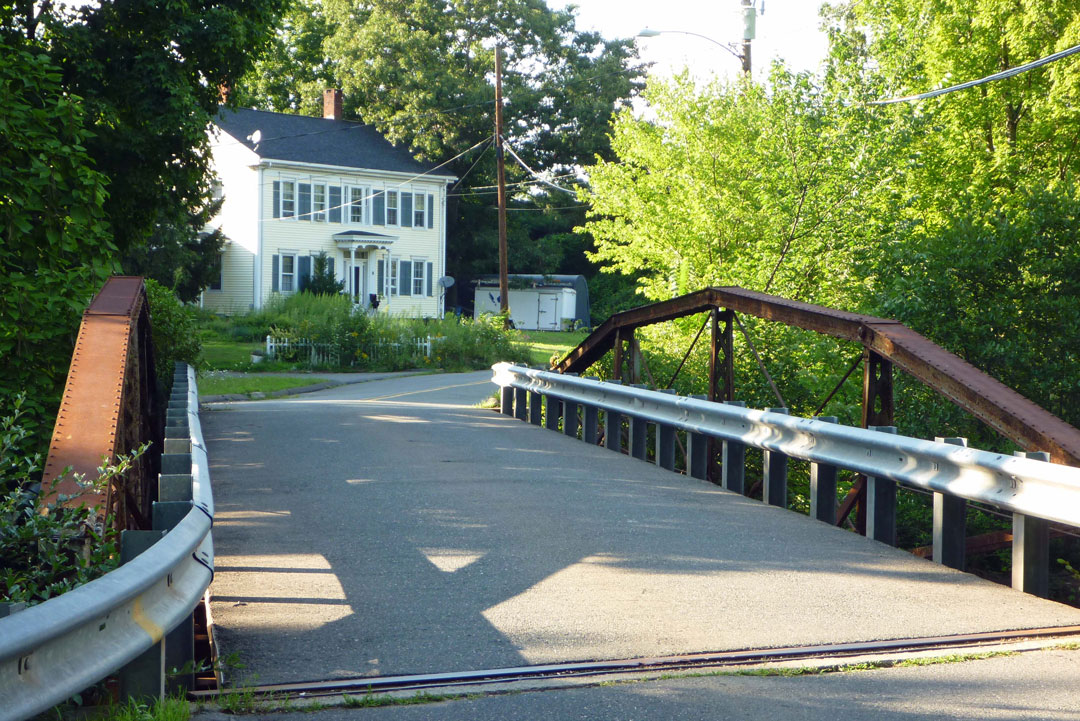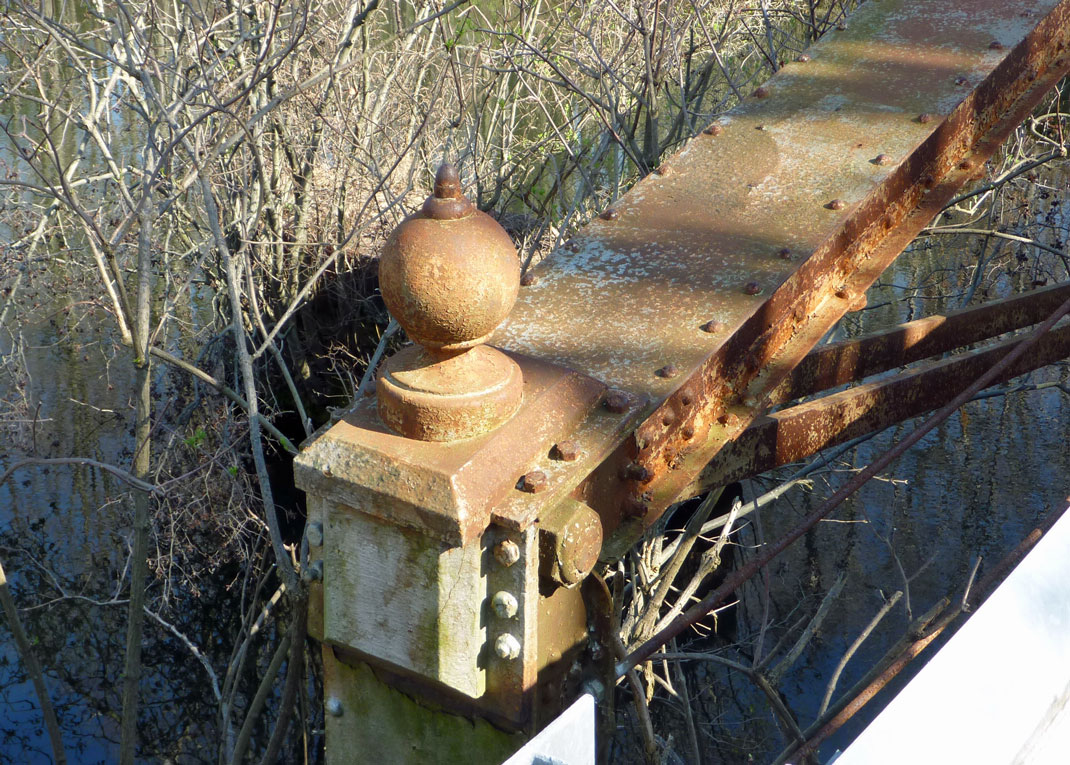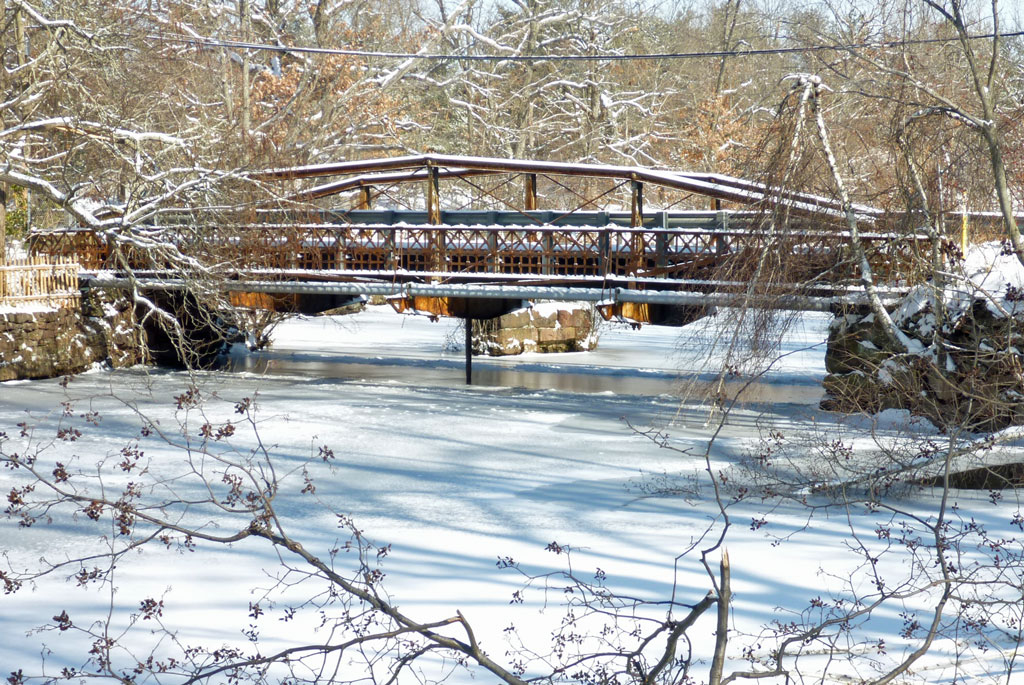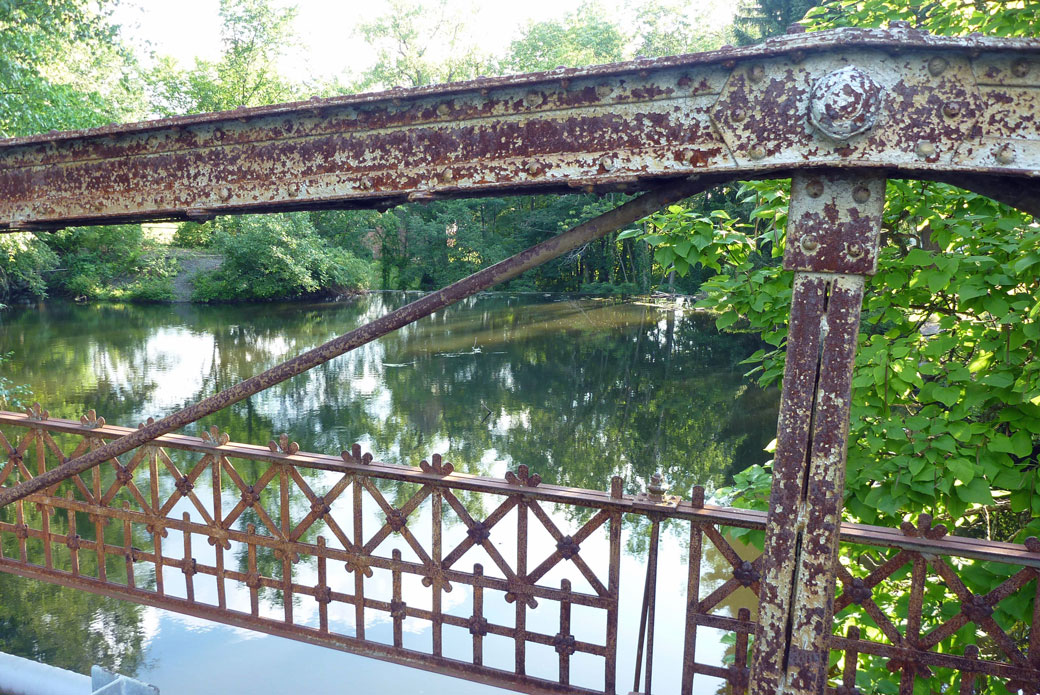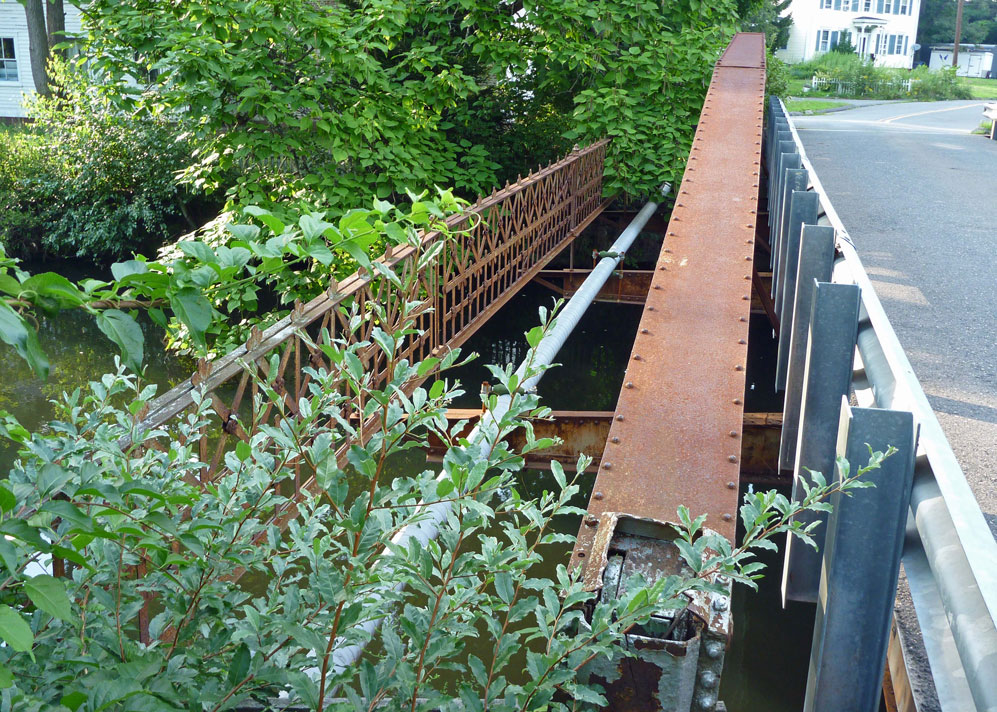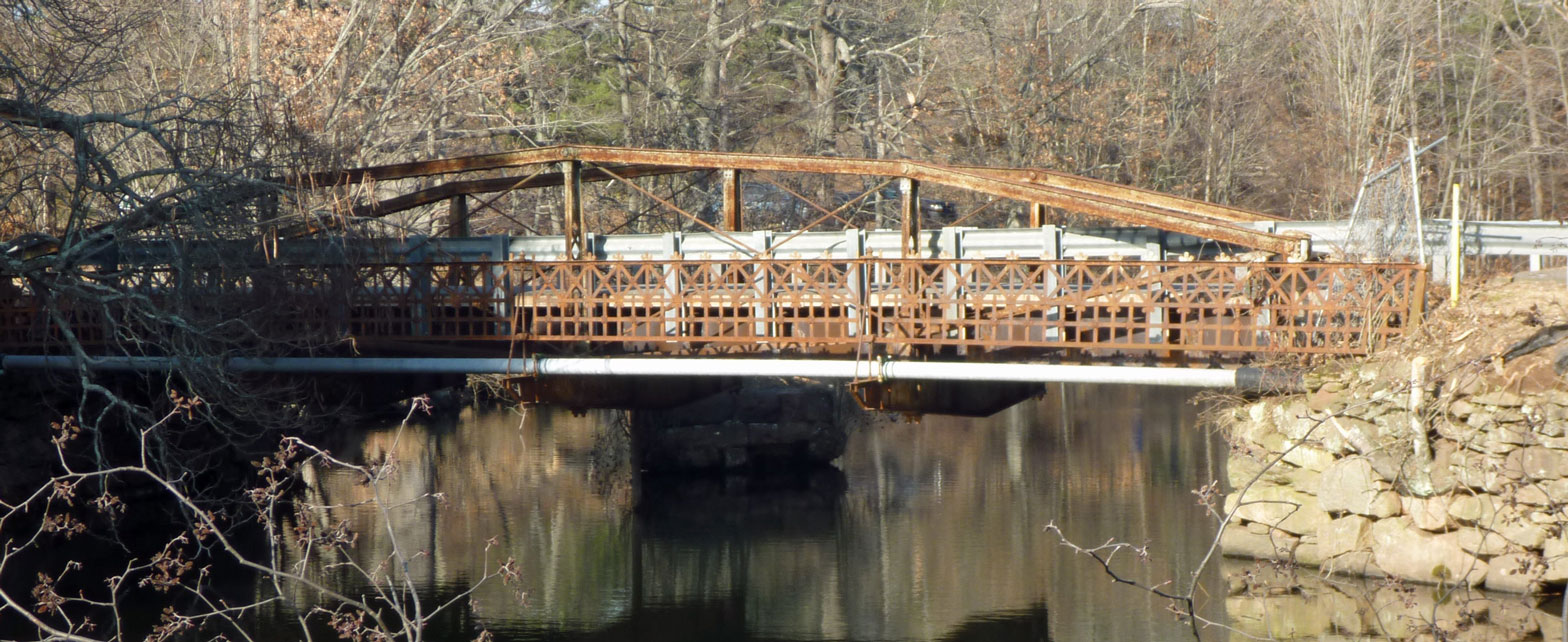 |
| Home | Geography | History | Biology | Recreation | News | Resources |
| Talcottville Home Page |
Talcottville Bridge
The road through Talcottville, Vernon's Main Street, began as an Indian trail - one of several connecting their village in East Hartford with Shenipsit Lake. Since the Hockanum River frequently flooded near its juncture with the Tankerhoosen River, the trail followed the edge of an elevated area to the east. This elevation, the last descent of the Tankerhoosen River before it merged with the Hockanum, will power the series of mills leading to the village of first Kelloggsville and later Talcottville. Although we don't know exactly what the land looked like when Indians ruled the area, there had to be a crossing of the Tankerhoosen just above the falls. Perhaps a ford originally, then a rough bridge of logs, and as the settlers arrived sturdier bridges, which likely washed out frequently with Spring freshets. About 1800, when John Warburton built a dam for his mill creating Talcottville Pond, part of his work likely included improving the bridge. The bridge had to be sturdy and reliable as he built his house on the north side of the river and his tavern and inn on the south side with stagecoaches regularly stopping at the inn and using the bridge. The Current Iron Truss Bridge
The current bridge was built in 1891 by the Berlin Iron Bridge Company. Previous bridges may have been destroyed by flood and replaced several times. There was a major flood in 1869 that destroyed one of the two Talcott mills. The 58 foot bridge, formally known as state Bridge No. 04575, is a wrought-iron lenticular pony truss, and is one of the best preserved of about a half-dozen of this type left in the state. The Berlin Iron Bridge Company was Connecticut's only large-scale fabricator of metal-truss bridges in the 19th century. Some 400 employees worked at its East Berlin plant, and hundreds of others worked in the field erecting the bridges. Over 1,000 Berlin bridges are believed to have been built before 1900. The company primarily built small-town highway bridges using its patented lenticular or parabolic truss design. Our Talcottville bridge is typical of the Berlin Iron Bridge Company's smaller spans. It uses tapered uprights, floor beams that are deeper in the center than at the ends, 'hairpin' hangers connecting the beams to the lower chord joints, and the company's distinctive lattice railing with cast-iron rosettes. Only one orb-shaped finial remains as a postal decoration, but such finials once graced the other corners of the bridge as well. Architectural details include a decorative iron rail along the pedestrian walkway. The bridge is supported on brownstone masonry abutments. It originally supported a wooden sidewalk that was removed when the gas line was added. Main Street in Talcottville was the main route into Vernon from Manchester and Hartford until 1931 and the iron bridge became a hazardous bottleneck as automobiles became common. In 1931 a new bridge over the Tankerhoosen was built and the highway bypassed Talcottville's Main Street. From a Rockville Leader article at the road opening: "The new wide cement bridge has completely eliminated the traffic dangers that existed when the old bridge was used. The old iron bridge had been a 'bone of contention' for years. Both entrances to the bridge were made from sharp curves and several motorists failed to make the turn and crashed over the side into the waters of the Hockanum (sic). The bridge was last renovated in 1995. It is now supported on an I-beam structure hidden beneath the deck. On the west side was a sidewalk which now supports a gas line. Trolley tracks crossed the river on separate pedestals on the pond side of the bridge and are still visible. The bridge is listed on the National Register of Historic Places as part of the Talcottville Historic District.
Replacing The BridgeThe bridge is in poor condition and will be rehabilitated this year (2021). The new bridge will retain and preserve the historic structure. As it is part of historic Talcottville it falls under the National Historic Preservation Act and the plans were carefully reviewed. The new bridge will remain one lane with an adjacent pedestrian path. The location and alignment won't change, the stone abutments will remain visible but new supports will be hidden behind them. The rust covered iron rails will be removed, cleaned, painted and restored. The gas line will be tucked under the bridge and out of site. And the trolley pedestals will still be visible upstream. At the same time the original masonry brownstone abutments well be rehabilitated by replacing missing stones and mortar. The gas main will be relocated beneath the bridge and will no longer be visible. See the 2017 DOT Report linked below for details. Work is expected to begin in March and be completed by November 2021. The cost will be about $2 million (80% Federal, 20% town).
Sources"Connecticut's Historic Highway Bridges" by Bruce Clouette and Matthew Roth, 1991, CT Department of Transportation, 101 pages. Available at the Rockville Public Library. DOT 2017 Report on the bridge rehabilitation. Berlin Iron Bridge Company Wikipedia page. The Rockville Leader, June 1931, page 1. 'New Road Opens On Sunday; Record Set' Updated February 2021 | ||
Home | Activities | News | References | Search | Site Map | Contact Us © Copyright The Tankerhoosen. All rights reserved. |
